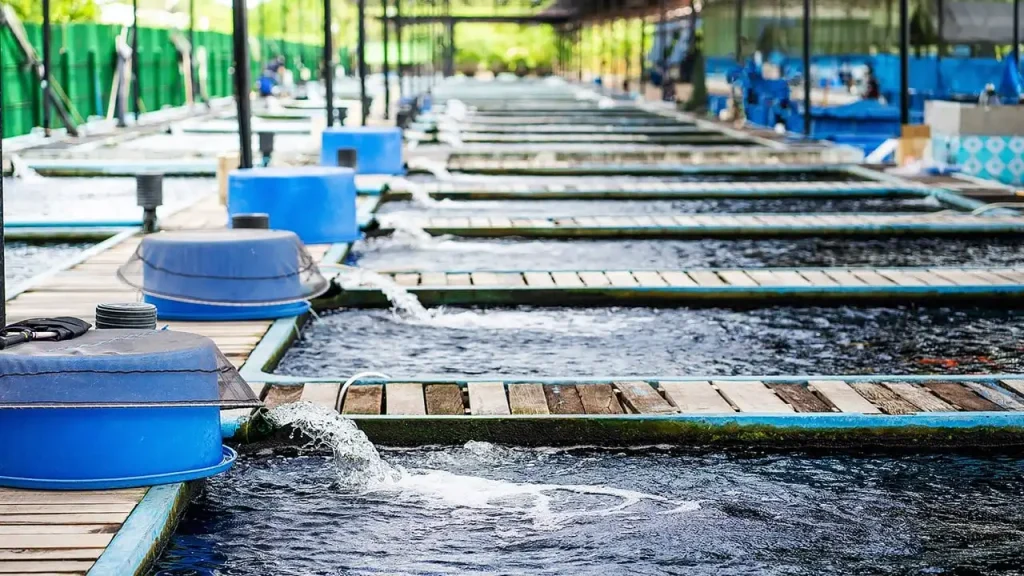Magnesium hydroxide is an inorganic compound with the chemical formula Mg(OH)2. It is a white powder with adsorption, precipitation, flocculation and other properties. In water quality conditioning, magnesium hydroxide is mainly used to remove hydrogen sulfide.
Messi Biology stated that the odor caused by hydrogen sulfide and other sulfur-containing organic compounds produced by long-term accumulation of sludge due to frequent feeding or long-term silt removal in aquaculture is a common problem. The use of magnesium hydroxide or magnesium oxide as a treatment agent can provide a suitable pH range (8.5~9.0) and can last for a long time. The product magnesium sulfate dissolves in the water without any harm. Using magnesium hydroxide to remove hydrogen sulfide from water is an implementation plan that is easy to obtain, environmentally friendly, technically feasible, economically reasonable, easy to operate, and safe to operate. It has a history of at least 15 years abroad and has very good performance in sewage treatment plants, sewers, and aquaculture applications.
Mechanism of action of magnesium hydroxide

When the organic matter in the sludge at the bottom of the aquaculture farm rots and decomposes, this area is in an anaerobic state. As a result, anaerobic sulfur bacillus-sulfate reducing bacteria (SRB, the same below) can grow and have considerable activity, which can reduce sulfate to hydrogen sulfide (H2S). In most cases, H2S generated from the bottom mud is produced by SRB. In other words, SRB can only grow and reproduce in weakly acidic water. When the pH value of the water is greater than 8.5 (usually 8.5 ~ 9.0), SRB cannot survive. Therefore, spreading magnesium hydroxide into the bottom mud will increase the pH value of the water to above 8.5. Although the solubility of magnesium hydroxide is very small, the rate of dissociation into magnesium ions and hydroxide ions is continuous. As long as there is enough dosage, the weak alkalinity of the water will be maintained for a long time, which can inhibit the growth of SRB and prevent the generation of hydrogen sulfide.
Hydrogen sulfide is a toxic gas that is corrosive and harmful to human health. In water, hydrogen sulfide reacts with water to form sulfate and hydrogen gas. Sulfates can cause water turbidity and affect water use.
Magnesium hydroxide reacts with hydrogen sulfide to form magnesium sulfide precipitate. Magnesium sulfide is a non-toxic substance that can precipitate at the bottom of the water to achieve the purpose of removing hydrogen sulfide.
The reaction of magnesium hydroxide to remove hydrogen sulfide is as follows:
Mg(OH)2 + H2S → MgS + 2H2O
The advantages of magnesium hydroxide for removing hydrogen sulfide are as follows:
The reaction principle is simple and the operation is convenient.
The removal efficiency is high and can reach more than 99%.
The generated precipitate is non-toxic and will not cause pollution to the environment.
The application range of magnesium hydroxide to remove hydrogen sulfide is as follows:
Industrial wastewater treatment: used to treat industrial wastewater containing hydrogen sulfide, such as papermaking wastewater, oil refining wastewater, chemical wastewater, etc.
Domestic sewage treatment: used to treat domestic sewage containing hydrogen sulfide, such as municipal sewage, industrial park sewage, etc.
The specific process for removing hydrogen sulfide from magnesium hydroxide is as follows:
Dosing method: Magnesium hydroxide can be added by dosing tank dosing, spray dosing, aeration dosing, etc.
Dosage: The dosage of magnesium hydroxide is determined according to the concentration of hydrogen sulfide in the water. Generally, when the hydrogen sulfide concentration is 1mg/L, the dosage is 0.5-1g/m3.
Reaction time: The reaction time of magnesium hydroxide and hydrogen sulfide is generally 1-2 hours.
Magnesium hydroxide removal of hydrogen sulfide is an effective method in water quality regulation and has broad application prospects.
The important influence of magnesium on fish, shrimp and crab
Magnesium is a component of chlorophyll in some bacteria. Although it does not participate in the composition of any cell structure material, its ionic state is an activator of many important enzymes (such as hexose phosphorylase, isocitrate dehydrogenase, carboxylase, etc.). Magnesium ions can improve the tolerance of some aminoglycoside antibiotic-producing bacteria (such as kanamycin, streptomycin, neomycin, etc.) to the antibiotics they produce. At the same time, magnesium ions can work together with sodium ions and potassium ions to maintain the balance of osmotic pressure inside and outside the cells, alleviate the response of aquatic animals to heat stress, thereby increasing the food intake of fish, shrimp and crabs in high temperature weather and reducing the heat stress response caused by high temperature fish, shrimp and crabs.
Messi Biology recommends that in the case of heat stress, the amount of magnesium oxide in the diet should be increased to make up for the loss of magnesium in the body, so as to ensure and maintain normal body balance. And magnesium is a component of chlorophyll, and various algae need magnesium. Magnesium plays an important role in sugar metabolism. Plants need more magnesium in the process of fruiting. Insufficient magnesium will stop the net synthesis of ribonucleic acid (RNA), disrupt nitrogen metabolism, and accumulate carbohydrates and unstable phospholipids in cells. Magnesium deficiency will also affect the absorption of calcium.
